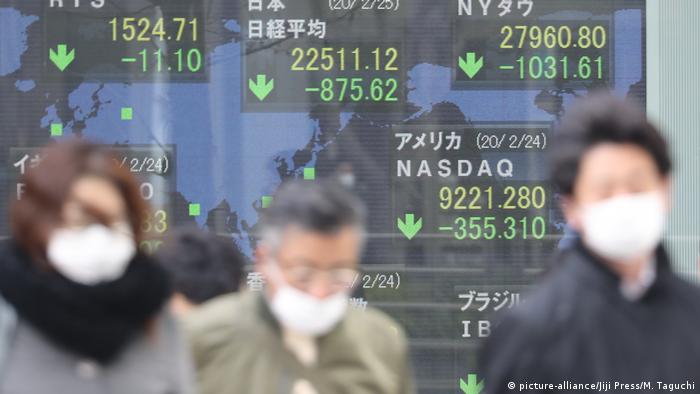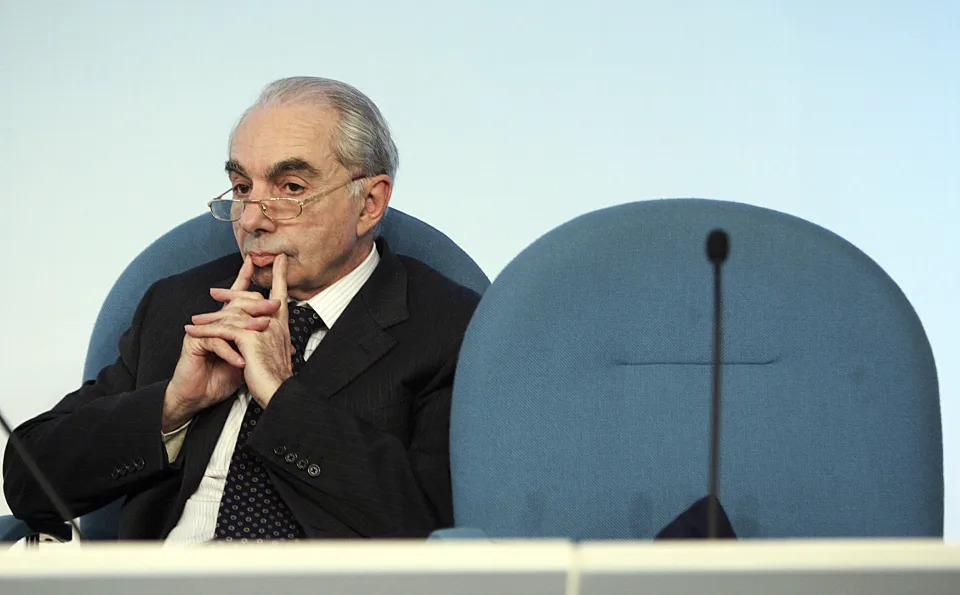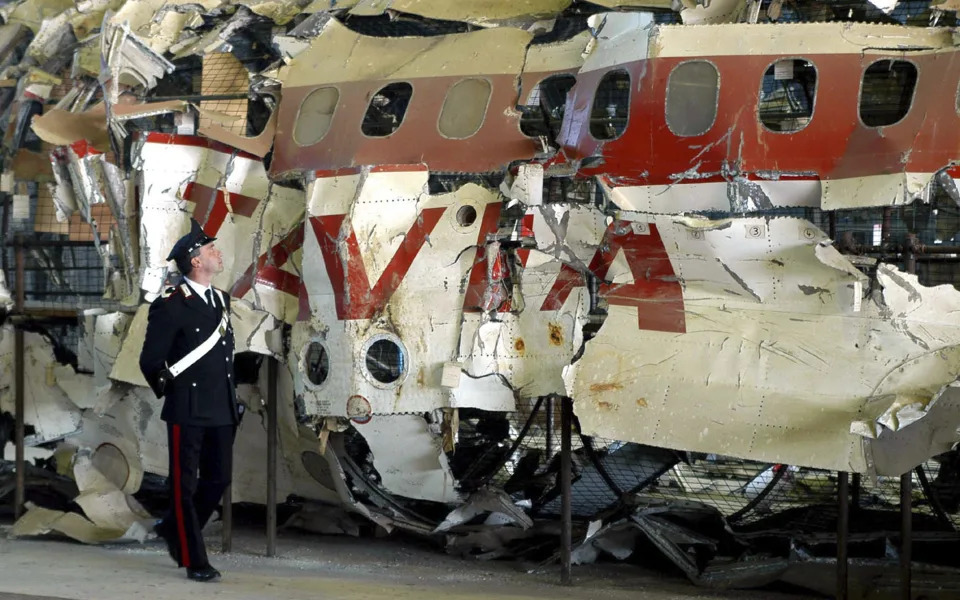By AFP
Published September 10, 2023

The defunct Lehman Brothers company sign is sold at Christie's auction house in London - Copyright AFP Ben STANSALL
A key catalyst for the 2008 global financial crisis, the bankruptcy of Lehman Brothers still reverberates for those who lived through it. Here are the accounts of three who were there.
– Paolo Battaglia, neophyte banker –
After interning in the summer of 2007, the young Italian felt mainly excitement in July 2008 at landing a job in Lehman’s private equity division in London.
“It was the start of a new adventure, my first job out of school,” Battaglia recalled. “At the time, Lehman was a prestigious and rewarding place to work.”
“Of course, I was aware it was not an easy moment for the industry and for Lehman in particular, but until the very last day, nobody expected Chapter 11 as a realistic outcome,” he said, referring to bankruptcy protection proceedings.
When it became clear Lehman would not survive as a stand-alone entity, the thinking was that it would be acquired by another heavyweight such as Bank of America or Barclays.
But on Monday, September 15, 2008, Battaglia and other employees arrived at the office to find bankruptcy administrator PWC distributing leaflets in the lobby, “basically instructing employees not to enter into any transactions anymore,” he recalled.
Everything changed overnight.
“It was a surprise that things stopped so abruptly,” said Battaglia who considered himself lucky to have worked in a division that was more shielded from the layoffs.
He worked through mid-2010 for a fund that was bought by Lehman colleagues before moving to Goldman Sachs, where he still works.
“I got the best I could have in a very unfortunate situation. The options were very limited.”
“I am sure events were thoroughly scrutinized and if nobody was charged it was because there was no crime,” he said. “We tend to associate bankruptcies with crime but it was just another business venture going bad.”
Battaglia views the recent crises hitting Credit Suisse and a slew of US regional banks as completely different, saying, “there are much more policy tools and experienced knowledge of regulators and markets to manage this kind of situation than 15 years ago.”
– William Dudley, troubled regulator –
William Dudley had a full schedule on the weekend before Lehman Brothers’ Monday morning bankruptcy — first a conference at Princeton University, then the wedding of a friend attended by associates in finance.
Dudley, who was vice president of the Federal Reserve Bank of New York at the time, went ahead with these events.
“You can’t really start cancelling things because that makes people even more nervous about what’s going on,” he said. “It was very strange going to the wedding and acting like nothing much is going on.”
Dudley had spent the early part of Saturday morning working on a plan to save Lehman.
“In reality, the story for me begins a bit earlier because Dick Fuld was on the board of directors of the Federal Reserve of New York so I had some interactions with him through 2007 and 2008,” Dudley said of Fuld, who led Lehman from 1994 until its demise in 2008.
“I was quite concerned that (Fuld) was in denial about the risks that the economy was facing, the financial system in general and Lehman Brothers in particular.”
Dudley shared his views with colleagues in the summer of 2008, but “my memo landed with a resounding silence,” Dudley said.
When Lehman filed for bankruptcy protection, the initial reaction “was not that bad,” Dudley recalled.
But the situation quickly shifted into a contagion as investors rushed to withdraw funds and cover their exposure.
Could Lehman have been saved?
“Right behind Lehman, there were other (groups) in trouble like AIG,” said Dudley.
“Maybe I should have been more forceful,” he said. “But it might have been too late already.”
But recent bank troubles have been more visible compared with 2008, Dudley said. “You actually knew why the firms were getting into difficulties.”
– Oliver Budde, whistleblower –
Oliver Budde resigned from Lehman Brothers in 2006, troubled by company practices. But the attorney was back at Lehman on the fateful morning when the firm filed for bankruptcy protection.
“I was actually at the building on the Monday morning when pandemonium broke out, when everyone started walking out with their stuff,” he recalled.
There was “a lot of sadness, a ‘can’t believe this is happening’ sort of shock,” he said.
In the early afternoon, Budde spotted Fuld “sneaking out the back way and leaving in his black Mercedes limousine with his own driver.
“I took a picture,” he said. “It’s a souvenir for me.”
Budde, who was living in Vermont at the time, spent the evening commiserating with former colleagues.
“I had seen that these men were not to be trusted,” he said. “In one sense, I was vindicated by Lehman’s bankruptcy.”
Budde had left his job as vice president and assistant general counsel in 2006, troubled by what he saw as tricks that top executives used to inflate their compensation and not disclose it to investors.
The firm made no changes even after regulators revamped the rules in 2008 to improve transparency.
“It was still hidden,” he said. “It was outrageous to me. So that’s when I became a whistleblower.”
Between April and September of 2008, Budde sent five emails to US authorities, while copying Lehman’s board and legal staff.
“No one ever contacted me, even afterward,” Budde said.
“I’m quite proud of my actions. I did the right thing by reporting my concerns to the authorities.”
Lehman could have been saved through a managed sale to Barclays, but the British firm “got a much better price” for major Lehman assets it acquired during the bankruptcy proceeding.
By AFP
September 11, 2023

The global pandemic caused stock markets around the world to crash in 2020 - Copyright AFP/File TIMOTHY A. CLARY
Fifteen years ago, on September 15, 2008, the Lehman Brothers investment bank went bankrupt, a victim of the global financial crisis during which stock markets crashed.
Below is a reminder of the other major crashes in history:
– 1637: Tulip mania –
The first speculative bubble of modern history involves exotic tulips. Prices for coveted varieties of the flower soar in the Netherlands at the beginning of the 17th century before the bubble bursts in 1637.
The blooms lost nine-tenths of their previous value.
– 1720: South Sea Bubble –
In early 18th century England, people are falling over each other to buy shares in the South Sea Company, set up to trade in slaves with South America and restructure the public debt.
When the shares crash, many investors are ruined.
– 1882: French crash –
The French economy suffers its worst crisis of the 19th century following the collapse in January 1882 of the share price of Union Generale bank which causes the Paris and Lyon stock exchanges to crash.
– 1929: Wall Street collapse –
October 24, 1929 becomes known as “Black Thursday” on Wall Street after a bull market implodes, causing the Dow Jones to lose more than 22 percent of its value at the start of trade.

Wall Street: — © Digital Journal
Stocks recoup most lost ground during the day but the rot has set in: October 28 and 29 also see huge losses in a crisis that marks the beginning of the Great Depression in the United States and a global economic crisis.
– 1987: Black Monday –
Wall Street crashes again on October 19, 1987, on the back of large US trade and budget deficits and interest rates hikes.
The Dow Jones index loses 22.6 percent, causing panic on markets worldwide.
– 1998: Russian crash –
In August 1998, the ruble collapses due to speculation linked to falling oil prices and the ripple effect of the 1997 Asian economic crisis.
Moscow declares a 90-day moratorium on the payment of its foreign debt and cannot borrow again on international markets for over a decade.
– 2000: Dot.com bubble –
The start of the millennium sees the deflation of the tech bubble caused by venture capitalists throwing money at unproven companies.
From a record 5,048.62 points on March 10, 2000, the US tech-heavy Nasdaq index loses 39.3 percent in value over the year.
Many internet startups go out of business.
– 2008: Subprime crisis –
The 2008 global financial crisis is caused by bankers in the United States giving subprime mortgages to people on shaky financial footing and then selling them off as investments, fuelling a housing boom.
When borrowers become unable to pay their mortgages, the stock market crashes and the banking system buckles, culminating with the dramatic bankruptcy of Lehman Brothers.
Millions of people lose their homes.
– 2015: Chinese boom-bust –
The popping of a Chinese stock market bubble in the summer of 2015 causes the benchmark Shanghai index to plummet by over 40 percent over several weeks, despite government intervention to try to stop the crash.
– 2020: Pandemic –
Global stocks crash in March 2020 after the World Health Organization declares Covid-19 a pandemic that will put much of the world under lockdown.
The Dow Jones loses 26 percent in four days, one of its biggest-ever drops.
But the rapid response by national governments, which dig deep to keep their economies afloat, helps most markets rebound within months.
US judge says 2008 bank fraudsters got off easy
By AFP
September 11, 2023

Judge Jed Rakoff says the US government failed to impose meaningful punishments on senior bankers involved in the 2008 financial crisis
John BIERS
US officials took a victory lap last month to commemorate their response to the 2008 financial crisis, pointing to $36 billion in fines as proof that banks have been held accountable.
But to US District Judge Jed Rakoff, who has criticized the Department of Justice (DoJ) for not criminally prosecuting senior bankers, such fines amount to an “easy cop-out” failing to achieve justice or discourage future chicanery.
“I don’t think it has a meaningful deterrent effect,” Rakoff told AFP as he reflected on the government’s enforcement record 15 years after the Lehman Brothers bankruptcy.
“For the company, it’s a cost of doing business,” Rakoff said.
Rakoff bases this assessment in part on his 15 years in corporate law before being named to the bench.
The corporate defendants Rakoff represented made a “huge distinction” between financial penalties and prison time, seeking to avoid the latter at all costs because they’d “heard how terrible (prison) is,” he recounted.
“And so it follows from that, if you are fairly confident that, even if you don’t get away with it, the worst that will happen is your company will pay a lot of money, then you’re much more ready to go and do it,” said Rakoff.
He added that he wasn’t familiar enough with the details to comment on the bank failures earlier this spring that spurred emergency actions by the Federal Reserve and other regulators.
“To me, it’s a matter of simple morality,” Rakoff said. “Companies do not commit crimes in the moral, intentional sense. It’s individuals within the companies who make the decisions that ‘we’re going to do the wrong thing here, because it’s going to make our company a lot of money.’
“And those are the moral failings that need to be punished.”
Consistently going soft on corporate criminals puts at risk the reputation that US markets “are among the most honest in the world and the most reliable,” Rakoff said.
“And when you have fraud that goes unprosecuted over time, it tends to undercut that confidence. And that is a serious, I think, problem for the United States.”
– Speaking out –
Appointed to the US District Court for the Southern District of New York by former President Bill Clinton in 1996, Rakoff is known for publicly taking on major judicial dilemmas more than colleagues.
He garnered attention in 2002 when he issued a ruling that found the death penalty unconstitutional, a decision that was quickly overturned on appeal.
Rakoff emerged as a critic of the government’s enforcement approach to the 2008 crisis, blocking a $33 million Securities and Exchange Commission settlement with the Bank of America.
In a scathing ruling, Rakoff in September 2009 dismissed the case as a “contrivance designed to provide the SEC with the facade of enforcement, and the management of the bank with a quick resolution of an embarrassing inquiry.”
While Rakoff later approved a modified settlement, citing the need for judicial restraint, he won praise as a rare check on Wall Street at a time of public rage against Big Finance.
After consulting court officers, Rakoff in 2014 began publishing essays questioning the enforcement response to the financial crisis, and in 2020 he authored a book critiquing the US justice system and addressing issues such as mass incarceration.
The DoJ last month announced that Swiss-based investment bank UBS would pay $1.4 billion to settle US charges that it defrauded investors in the sale of mortgage-backed securities.
The DoJ’s original complaint quoted a UBS mortgage official as referring to a pool of loans as “a bag of sh[*]t,” and another employee as calling a group of loans “quite possibly better than little beside leprosy spores.”
The UBS case marked the final major settlement under a DoJ-led working group established in 2012. The DoJ cited $36 billion in civil penalties as bringing accountability to “those who break the law and undermine the well-being of American families,” said an agency press release.
But Rakoff, a former federal prosecutor, likened such fines to a slap on the wrist — a retreat from the prosecutions in the early 2000s of top executives from Enron, Worldcom and other companies.
Limited resources explain some of the change, with DoJ focusing more on terrorism cases after the Sept. 11, 2001 attacks, Rakoff said.
A bigger issue is a shift in strategy. Prosecuting CEOs involves a painstaking process that typically requires charging people lower in the company and getting them to cooperate to catch a big fish.
“But those are hard cases to make,” Rakoff said. “They take a long time and sometimes you won’t be able to prove it in the end.”
By contrast, it may take six months to get a settlement, and “you can have a big splash in the papers: ‘Today Bank X pled guilty to a criminal offense and paid $5 billion.'










